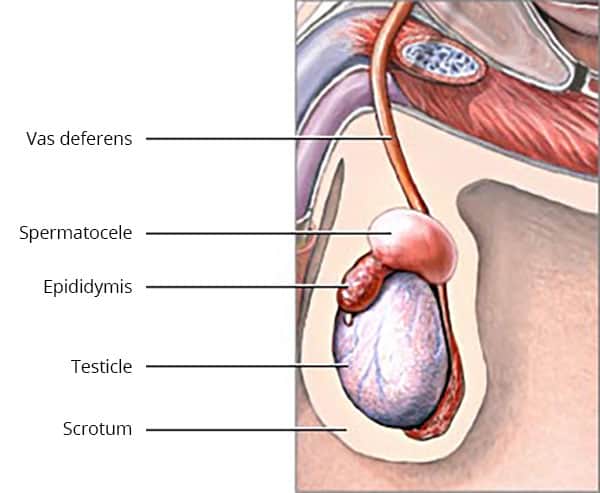What is an Epididymal Cyst?

An epididymal cyst (spermatocele) is a fluid filled lump next to the testicle, within the scrotum. Large cysts can be felt as a soft lump separate from the testicle. Epididymal cysts are very common and often appear for no reason. Epididymal cysts are not dangerous and are not usually a sign of any serious problem. However, they can sometimes grow and become uncomfortable or bothersome.
Why do I need an Epididymal Cyst Excision?
There are a number of reasons why an epididymal cyst might need removing:
- The cyst is large enough to be causing pain or discomfort.
- The cyst is large enough to be a nuisance or look unsightly.
How is it performed?
The operation is usually performed under a general anaesthetic. If you are fit and well, it can be done as a day-case procedure, which means that you will be allowed home 3-4 hours after you have recovered from your general anaesthetic.
A short cut is made on the scrotum over the swelling. The cyst is removed and some stitches are put inside to stop the fluid returning. Finally, some skin stitches are used to close the skin edges together.
A dressing is put over the wound (this can be removed after 24 hours).
What are the risks, consequences and alternatives associated with having epididymal cysts excised?
Most procedures are straightforward; however as with any surgical procedure there is a chance of side effects or complications.
Occasional
- Recurrence of the cyst can occur, or new cysts can appear in the future.
- Blood collection around the testes (haematoma), which resolves slowly or requires further surgery.
- Possible infection of the testes or incision requiring antibiotics.
Rare
- Chronic scrotal pain.
- Shrinkage of testicle due to damaged blood supply.
Alternatives to Epididymal Cyst Excision
- Leave cyst alone (no treatment).
- Aspirate fluid with needle (high chance of fluid coming back).
Post-operative care and discharge plan
After the effects of your general anaesthetic pass, you may eat and drink. Your surgeon will have applied a non-adherent dressing to the wound. You can keep this on for 24 hours. Wear 2 pairs of supportive underwear. An ice pack may help reduce swelling.
For the next 7 days, you may shower and lightly wash the area of the wound with water. You will have dissolvable stitches in the wound. When the stitches start to dissolve, the wound can look gluey. Do not worry about this, once the stitched have fallen out the scrotal wound will be hardly noticeable.
You should generally be able to return to normal activity after about 1 week.
Contact your Surgeon if you have any of these problems after surgery:
- Fever (with a temperature of more than 38°C) or chills.
- Heavy bleeding from the incision.
- Increasing swelling of the scrotum or swelling around the surgical sites.
- Increasing pain.
- Redness spreading from incision points.
- Any other concerns regarding your surgery.
Please ring the rooms to make a follow up appointment in one month.
Do not hesitate to ring the rooms earlier if you have any concerns or questions.
Disclaimer
This information is intended as a general educational guide and may not apply to your situation. You must not rely on this information as an alternative to consultation with your urologist or other health professional.
Not all potential complications are listed, and you must talk to your urologist about the complications specific to your situation.
